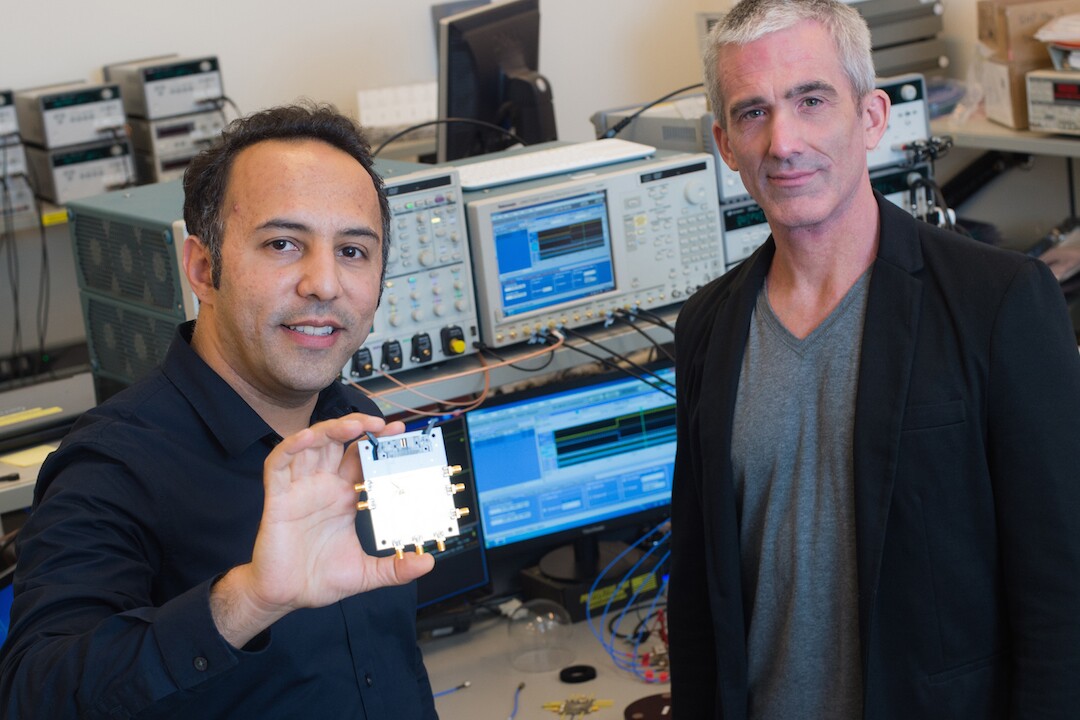With smartphones glued to our hands providing ready access to the sum of humanity's knowledge and cat videos, the world as a whole is chewing through serious amounts of data. Researchers are using infrared, the UHF spectrum, and mm-wave transceivers to find faster and more efficient ways to transmit that information, and now a team at Rice University is taking inspiration from the very first radios in the quest to achieve blistering wireless data transfer rates of 1 terabit per second.
Italian electrical engineer Guglielmo Marconi is often credited with inventing the radio as a long-range communication system. Around the turn of the 20th century, Marconi demonstrated a pulse-based system that was able to transmit low-frequency signals over long distances, which kickstarted wireless communication technology. Over the last few decades, wireless systems have used modulated electromagnetic waves to carry data, but the team at Rice has revisited pulse-based transmission to reach wireless data speeds approaching that of the fastest optical system.
"(Marconi) used an antenna connected to a large capacitor," says Aydin Babakhani, co-principal investigator on the project. "By charging that, he could cause the power to build up until the voltage difference ionized the air gap and caused all the power to be sent to the antenna at once. Our pulse-based system is inspired by Marconi's invention, but instead of the power going to a large antenna through an air gap, like Marconi's, ours goes to an on-chip antenna through a high-speed bipolar transistor."
Their device stores magnetic energy on the chip and then releases it through a digital trigger, which results in a pulse on the scale of picoseconds (trillionths of a second). Repeating that process allows a high frequency pulse rate up to 10 GHz, which the team believes is the only way transmission speeds of 1 terabit per second are possible with for wireless technology not using lasers.
"Breaking the terabit-per-second barrier with radio will enable an entirely new set of wireless applications and communication paradigms," says Edward Knightly, the principal investigator.

The next steps for the team in their quest for 1-Tbps speeds are to develop a larger transmitter made up of an array of around 10,000 individual antennas on chips, which can send pulses at frequencies between 100 GHz up to a few THz. That many antennas will allow for signals to be beamed as far as a quarter of a mile (0.4 km), and be directed with laser-like precision.
"Modulated, frequency-based communications technology has been perfect for the lower frequency radio waves that we have relied on over the past half-century, but everything changes at higher frequencies above 100 GHz," says Knightly. "Instead of having signals that bounce off walls and are highly scattered throughout the environment, we're moving to a regime where we only effectively have line-of-sight. The benefit is we're going to blast all the bandwidth and all the information directly to a device with laser-sharp focus, and no one else will be able to intercept that signal because any receiver that's offline simply won't detect it. So, we're focusing like a laser but we're using radio. The challenge is to steer that beam to the right place at the right time and to follow users as they move."
Source: Rice University








